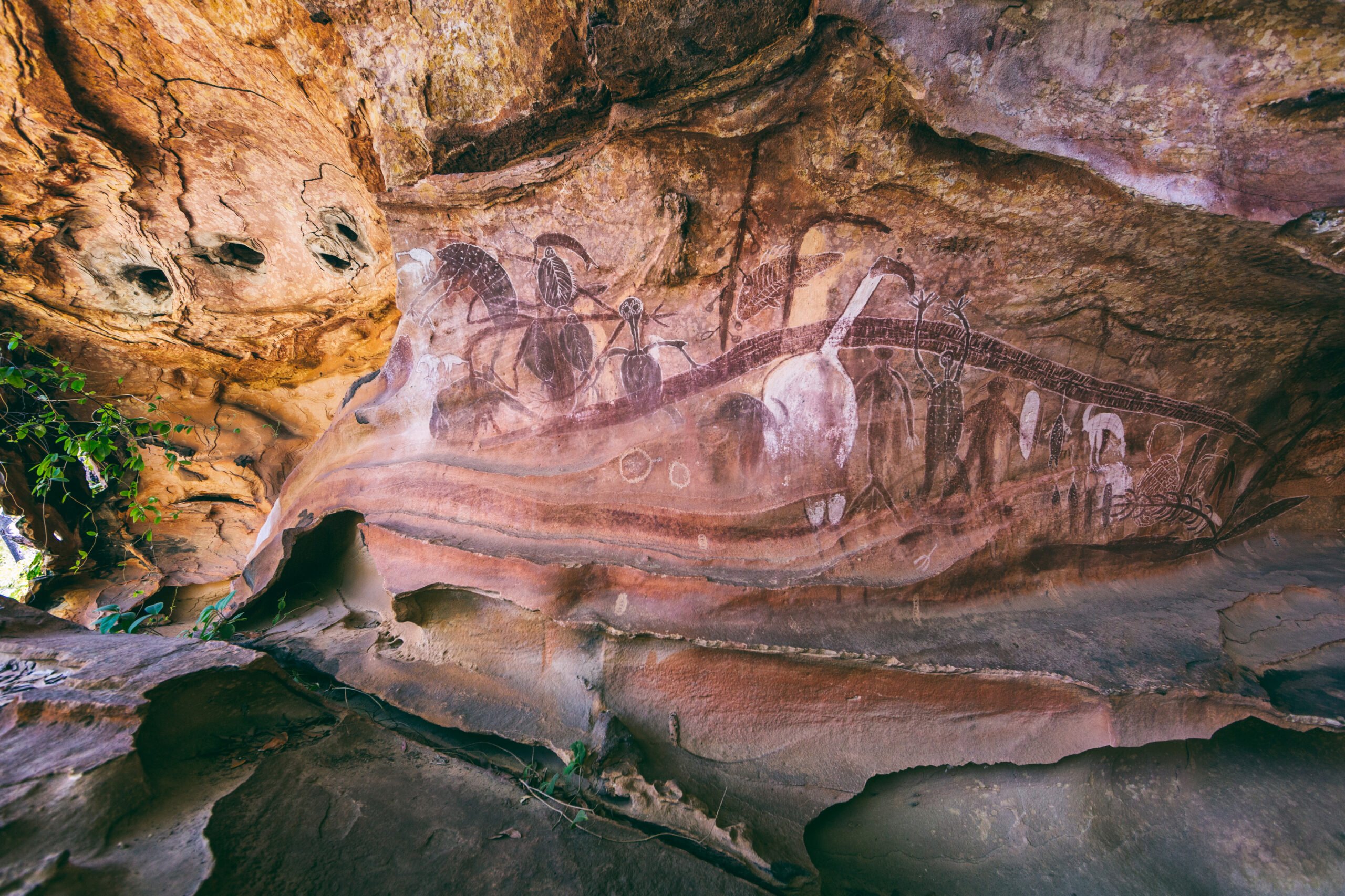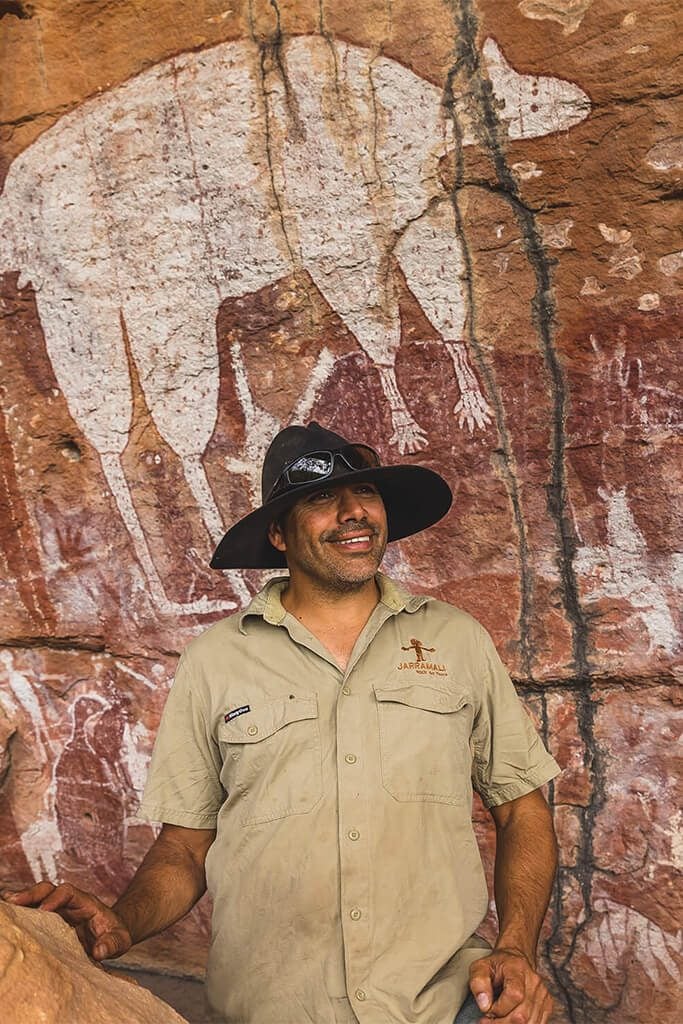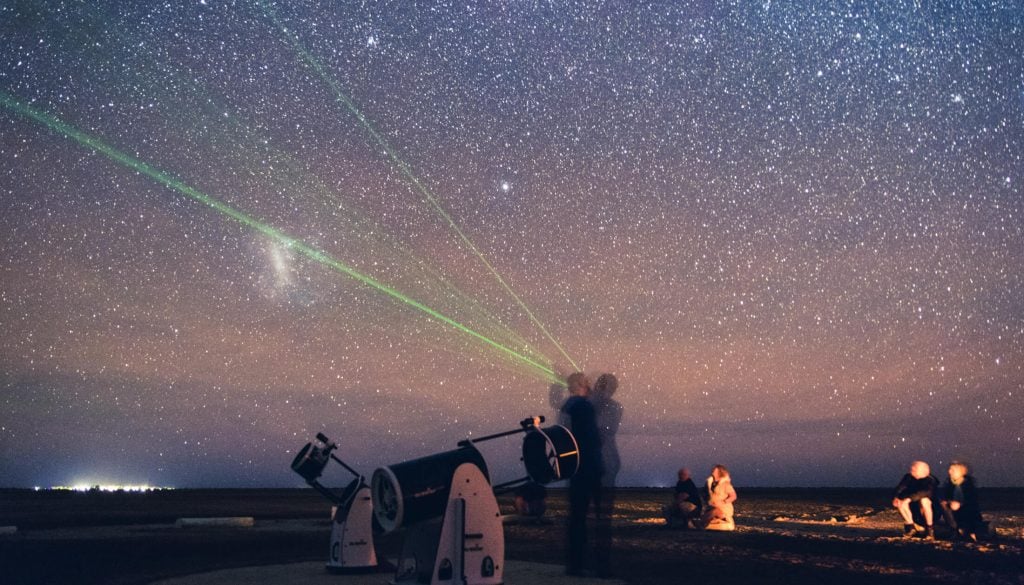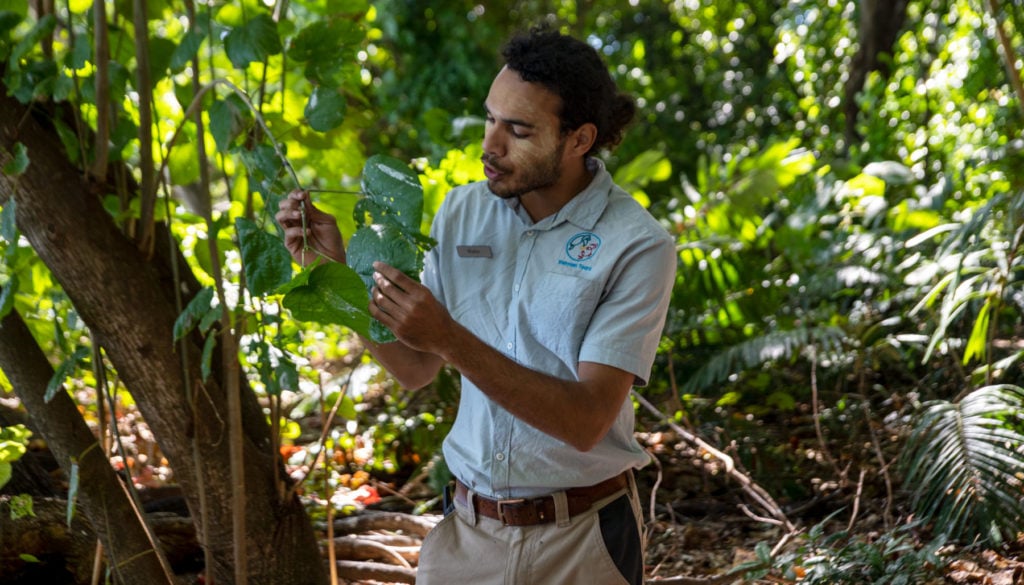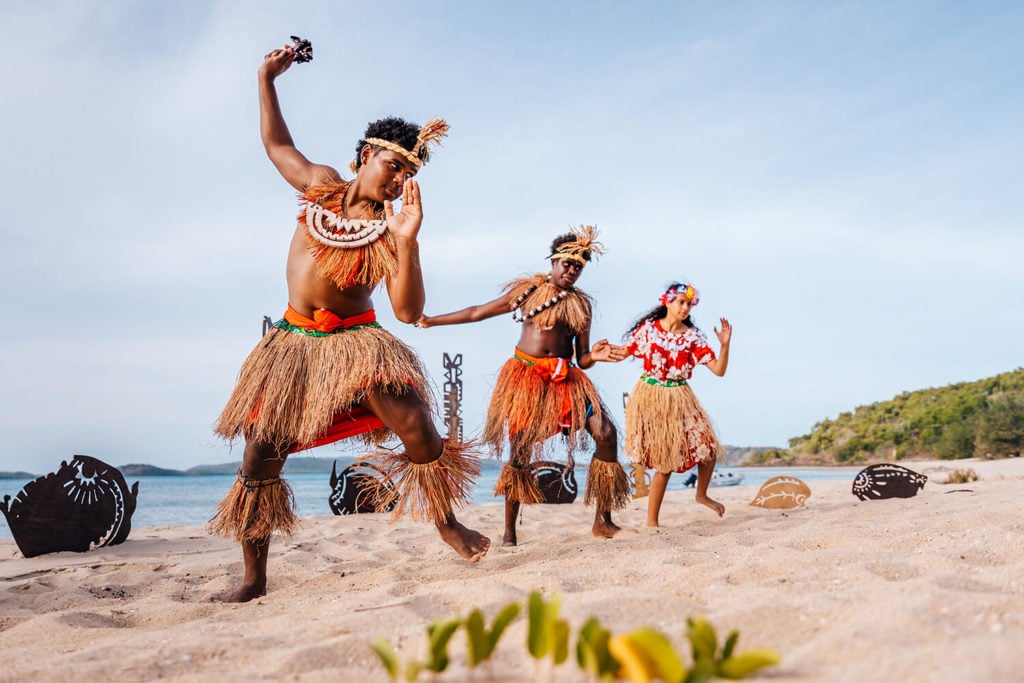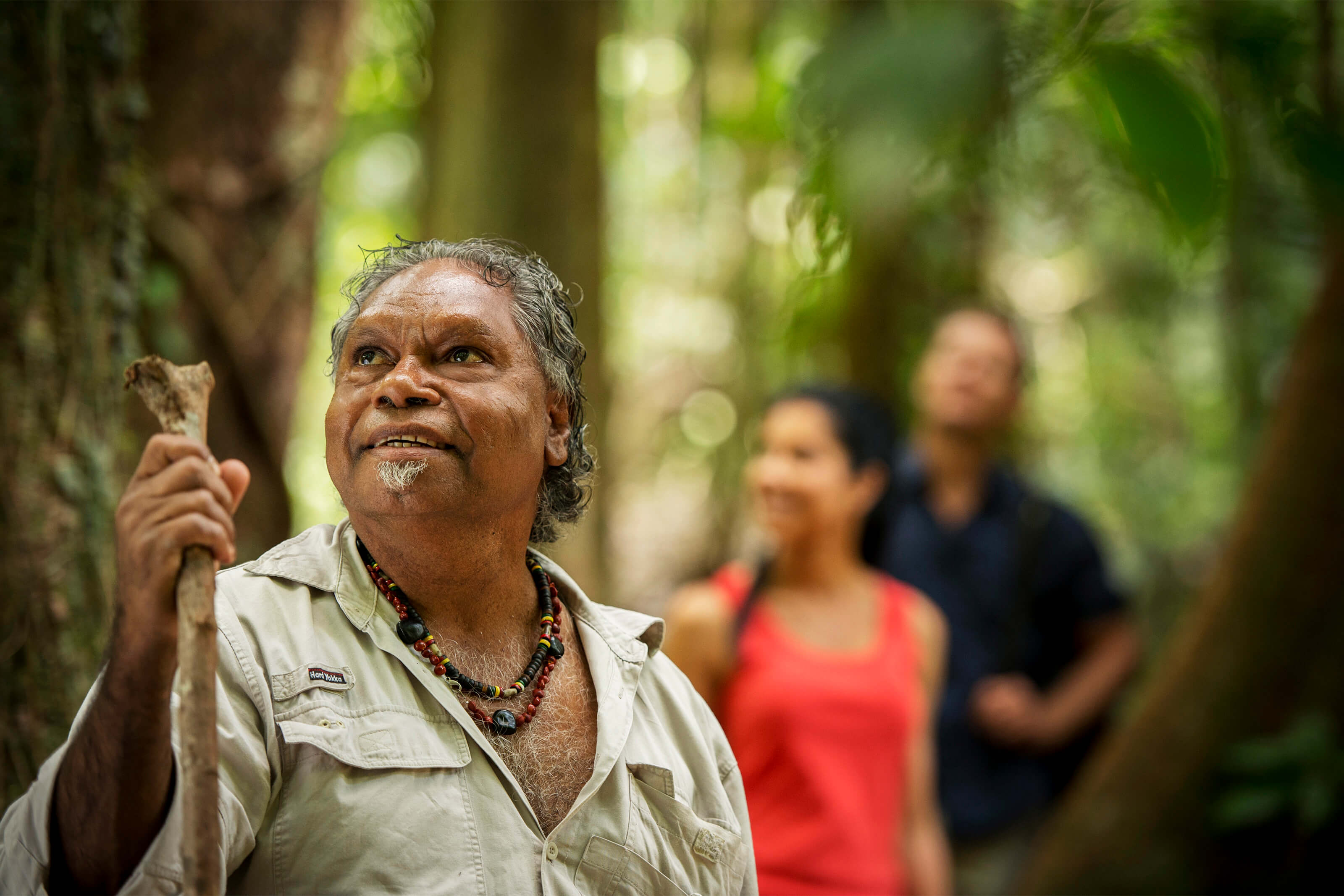TNQ Writer
Tropical North Queensland features some of the most historically important Aboriginal rock art galleries in the world. Feel dwarfed in time and connected to Country in the presence of rock art created tens of thousands of years ago.
A Window into History
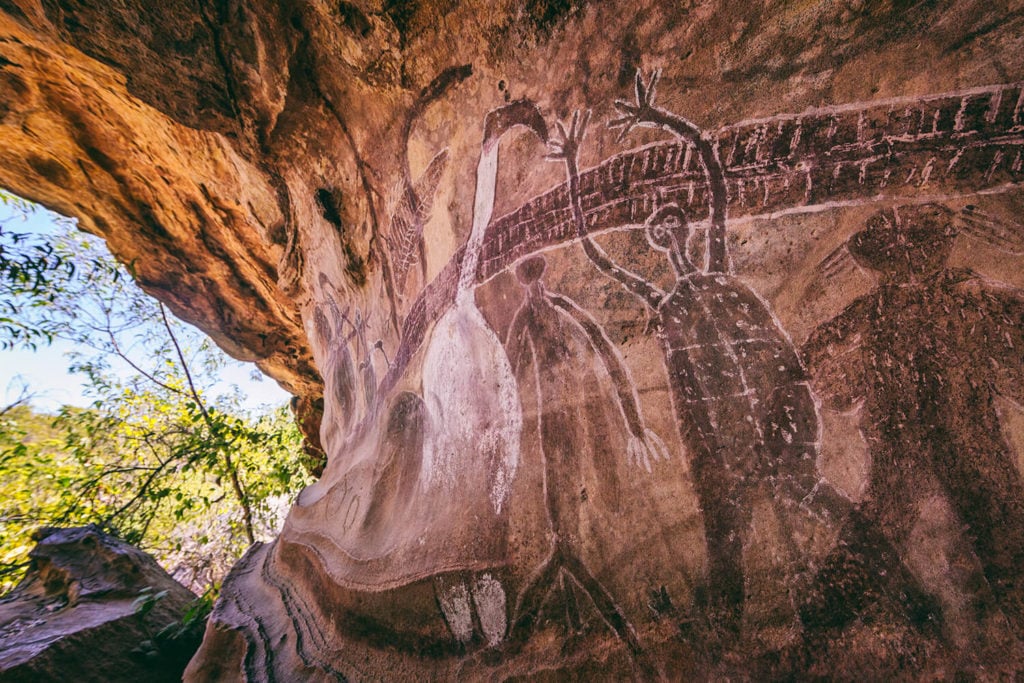
Rock art is important spiritually, culturally, and socially and provides an important connection to culture and Country for Traditional Custodians. It was used as a communication tool, depicting species of flora and fauna in the area, food and water sources, as well as recording historical events, spirits and stories; other times it was part of ceremonies, or demonstrated customs and lore.
Rock art sites (also called galleries) provide important anthropological information for how people lived, their beliefs and provide a window into their histories. Sites mostly occur in drier areas and may include pictographs (paintings and stencils) and petroglyphs (engravings). Many are layered and painted over across millennia.
There are thousands of sites throughout Tropical North Queensland, though many are inaccessible due to their remote locations, and for preservation and cultural reasons . While Aboriginal sites are what most people think of, there are also sites in the Torres Strait Islands, which are not generally accessible to the public, but are important to acknowledge.
Where possible, visit with a Traditional Custodian guide to provide greater insights, and to support and empower them to remain on Country and continue cultural practices.
Always visit with respect: never touch artwork or artefacts, take care not to kick up dust as this can degrade sites, and keep to the path if there is one. If you perchance on a rock art site, observe cultural protocols including not filming or photographing without consent.
Quinkan Rock Art Sites
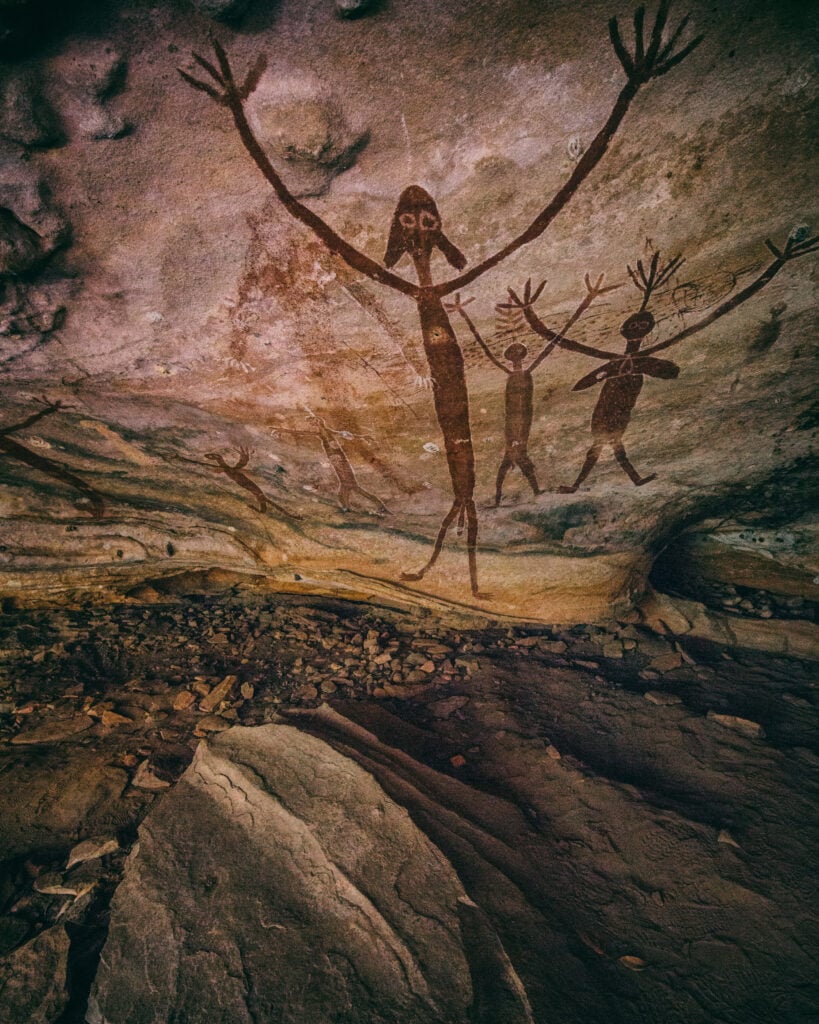
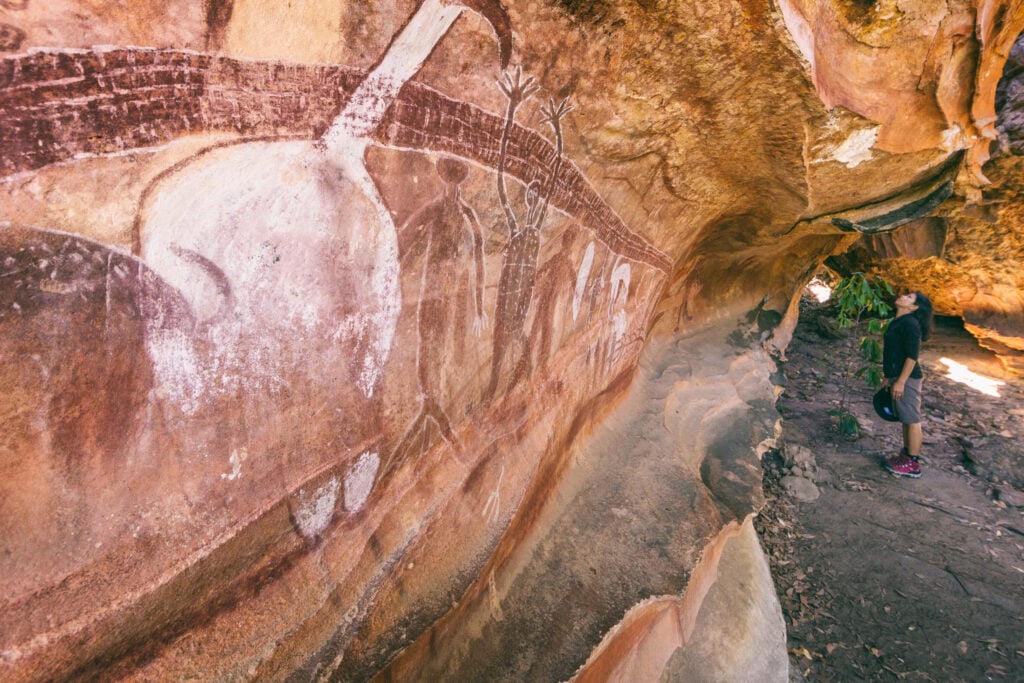
Split Rock, Giant Horse, Mushroom Rock and Sandy Creek rock art sites
The most extensive example of rock art in the region is within Quinkan Country throughout the Laura Basin sandstone belt, west of Cooktown in Cape York. Quinkans are spirit figures and are depicted throughout many galleries. Featuring thousands of sites, this is some of the largest Rock Art Sites bodies in the world, with several galleries open to the the public either by guided tour or self-guided for a fee.
Tours can be arranged through Ang-narra Corporation and visit sites including Split Rock, Giant Horse, Mushroom Rock and Sandy Creek. Some are estimated to date back 15,000 to 40,000 years, while other sites show clear examples of post-european contact like Giant Horse, thought to document the sighting of Edmund Kennedy as he travelled through Kuku Thypan and Kuku Yalanji country in 1848.
Tip: Head along to the bi-annual Laura Quinkan Dance Festival (each July in odd years). Tours to the rock art sites run throughout the duration of the festival.
Jarramali Rock Art Tours
Another way to experience Quinkan Rock Art is an immersive on-Country camping experience with Jarramali Rock Art Tours. Your Kuku Yalanji guide will take you on a truly off-the-beaten path adventure to multiple galleries and landmarks, while teaching you about bush tucker, traditional medicines and Aboriginal way of life. The flagship site lives up to its moniker, Magnificent Gallery, with 20,000 years of history exhibited on sandstone walls.
At night, exchange yarns by the campfire with a plate of comforting dinner cooked on the coals. Feel transported through time as drone of the yigi yigi (didgeridoo) resounds off the sandstone cliffs, making you feel connected to Country like never before.
Culture Connect: Normanby Station
Further east from the Quinkan Rock Art sites, visit Normanby Station with Balnggarrawarra People of the Guugu Yimithirr Nation with Culture Connect. Visit rarely-seen rock art sites, and learn about how the Indigenous Rangers are keeping culture alive and restoring Country through their conservation efforts, including cultural mapping, erosion control, weed and pest animal management.
There are half-day and full-day tour options from Cooktown, as well as a fly-in fly-out day tour from Cairns, but the stories and sites you visit will stay with you for life. This experience is suitable for those with a reasonable level of fitness and involves approximately 5km of walking over rugged terrain.
Bunda Bibandji Rock Art
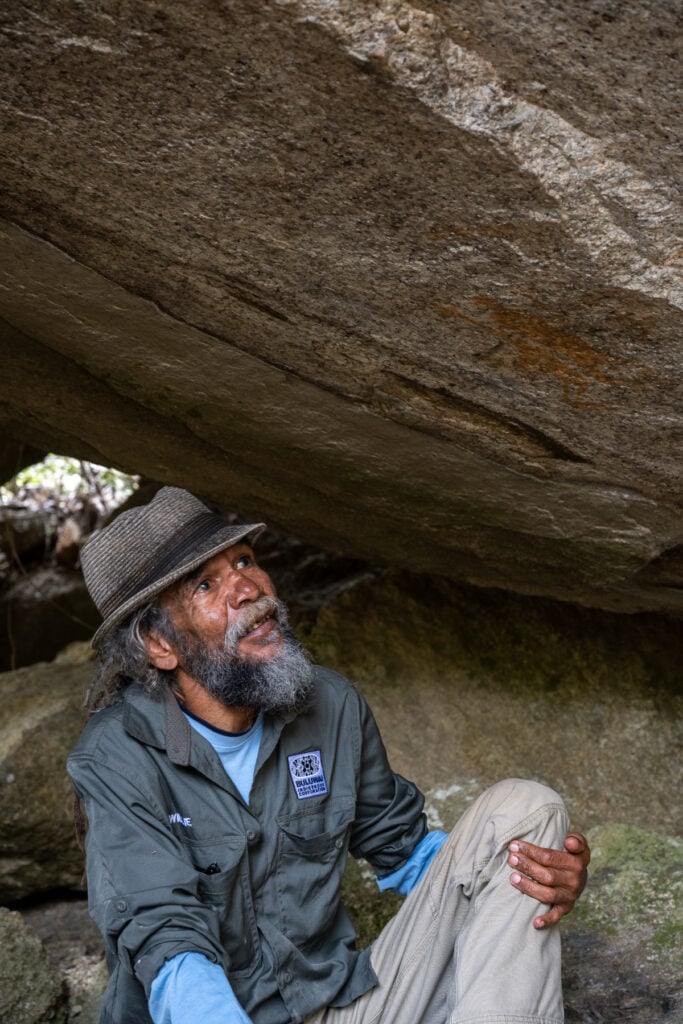
Traditional owner Willie Brim with rock art
Traditional owner Willie Brim with rock art
Photo by @buluwai
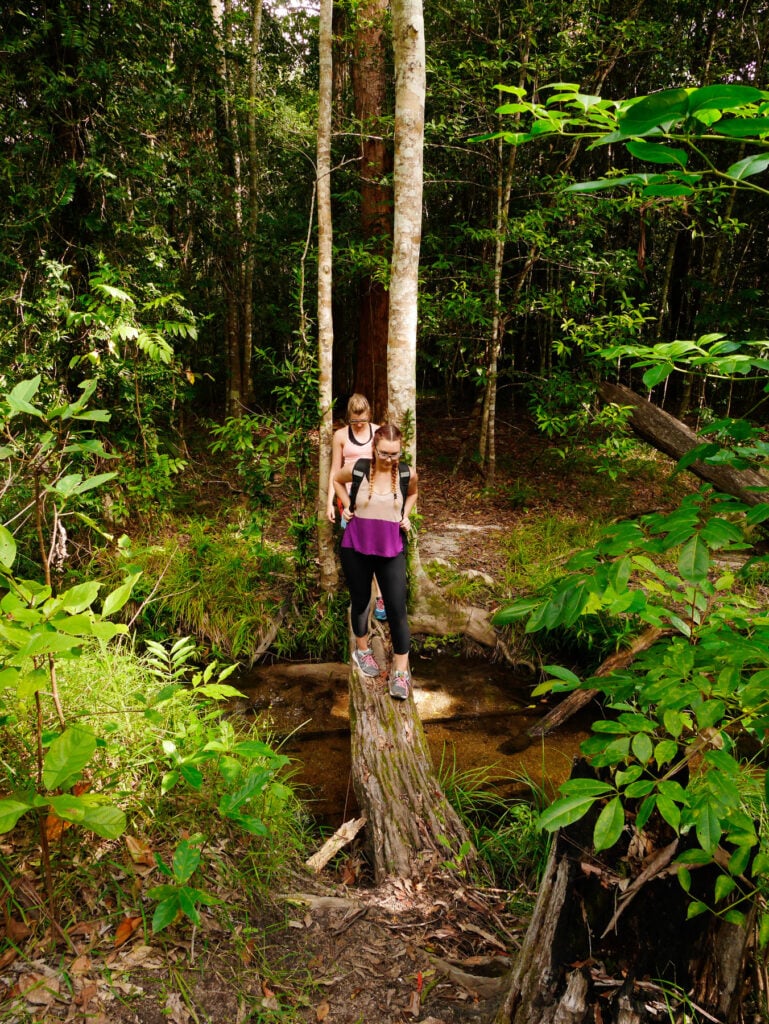
Dinden National Park
Dinden National Park
Photo by @buluwai
Located on Buluwai Country within Bare Hill Conservation Park near Mareeba, this site (also spelled Bunda Dilbandji) is the largest example of rock art within the Cairns and Tablelands region. It can be accessed via 4WD only, followed by a 1.9km return walk with some steep sections. To get here follow Davies Creek Road for 2.5km, turn left onto Bridle Creek Road and follow for 5km.
It’s estimated to be around 3,500 years old and is a sacred birth place for women, which is evidenced by paintings of childbirth. Information plaques state that the Buluwai women decided to come here to give life after two sisters accidentally killed a man, Kunindooran, whose story is told here by Traditional Owner, Willie Brim. Other paintings depicted include wallabies and wallaroos painted with a unique technique not seen anywhere else in Australia.
Chillagoe: Mungana & Wullumba Rock Art
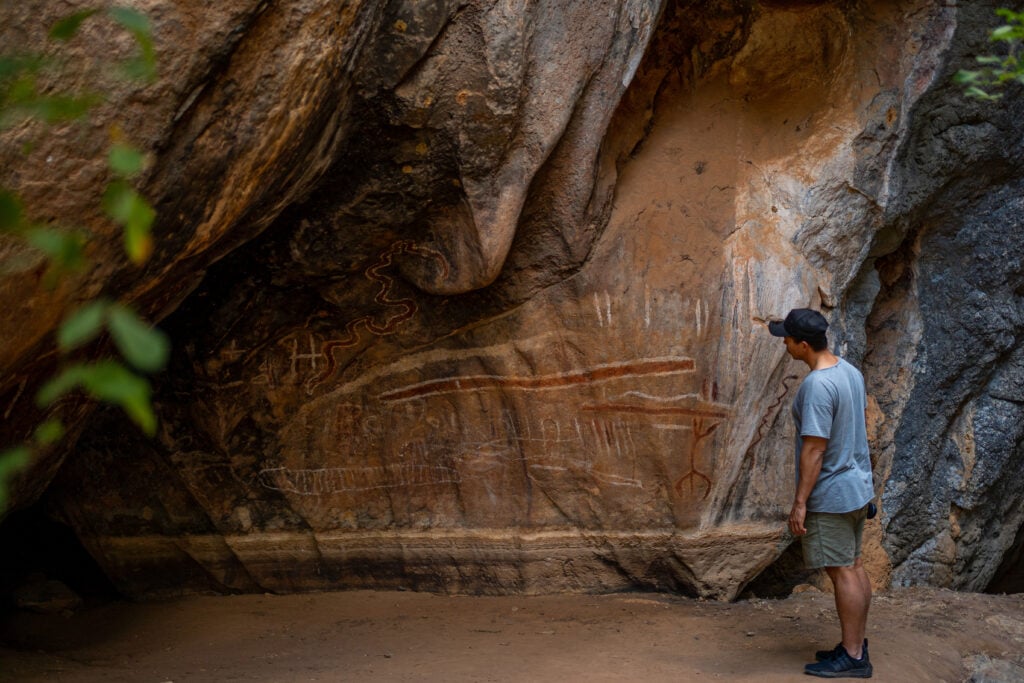
There are two publicly accessible sites at Chillagoe – Mungana and Wullumba.
Indirect dating methods and radiocarbon analysis suggests most of the sites from the Chillagoe area are less than 3,500 years old. At Wullumba, it’s thought the most recent painting was only around 100 years old.
At Mungana, a small gallery is located 1.2km along the gravel road to The Archways. It features a collection of motifs in red, white and black, including a series of horizontal and vertical lines, and what appears to be snakes.

